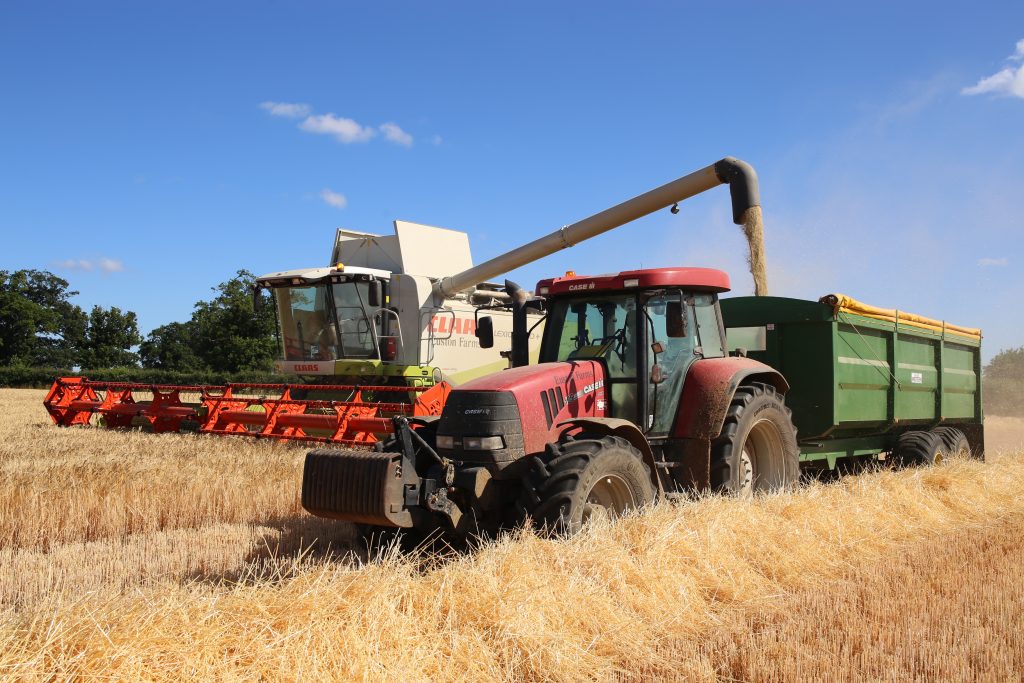Harvest Results – Winter Barley (16-7-18)
17th July 2018
Harvest Results from two AHDB Recommended Lists (RL) winter barley trial sites (Lincolnshire and Suffolk) have been published.

First winter barley Harvest Results show two tonne yield difference
Harvest Results from two AHDB Recommended Lists (RL) winter barley trial sites (Lincolnshire and Suffolk) have been published. These are the first results to be announced from the 2018 trials, with the Suffolk site averaging 9.03t/ha and the Lincolnshire site averaging 11.07t/ha, reports AHDB Cereals & Oilseeds.
Weather extremes have been seen across the UK this season. However, a two-tonne variation between sites, as well as the average yields reported, are not unusual.
The overall yield average of control varieties from the two trials so far in 2018 is 10.05t/ha, contributing to a five-year control average yield of 9.88t/ha.
Although it is early days to make conclusions, variable results, following on from the weather extremes experienced this season, are anticipated.
March and April saw mild but wet weather in the main cropping areas, while June and early July were exceptionally dry and warm. Late June soil moisture deficits were the highest recorded, going back to 1961, and it was the hottest June in records back to 1910.
Yield differences will depend on crop establishment and rooting over the winter and the moisture retention capability of the soils over the dry summer spell.
Regional information on weather patterns can be found on the new AHDB WeatherHub site: cereals.ahdb.org.uk/weatherhub
Yield results
Yields are represented as a percentage of the control varieties. In 2018, the control varieties comprise two malting varieties, SY Venture and Talisman, the six-row hybrid variety Bazooka, the six-row conventional variety Funky and the two-row feed variety KWS Glacier. The average of the yields from these varieties is represented as 100%. The current 2018 values only show yields based on one season from two sites. As more information becomes available, the five-year average is a better measure of their performance over the past five seasons (2014 to 2018).
In 2018, the six-row hybrid feed varieties Belmont (108%), Belfry (107%), and Bazooka (106%) are all performing well.
The two-row feed varieties KWS Tower, KWS Orwell and Surge have a yield of 102%.
Two-row malting varieties are judged more on their quality than outright yield. Electrum has a yield of 102%, Craft 98%, SY Venture 97% and Coref 96%.
Using the five-year average
When selecting varieties for next season, the five-year average values give a better representation of performance in across seasons. The six-row hybrids Belmont (109%), Bazooka (108%), Belfry (107%), Sunningdale (107%), KWS Astaire (106%) and Funky (106%) are performing well. The six-row hybrid Libra (105%) looks interesting, since it can achieve specific weights which equals the best two-row feed varieties.
Looking at the two-row feeds, KWS Orwell (102%) Surge (102%) and KWS Infinity (101%) continue to headline on yield. California is recommended for the West but all results, to date, are from the East trial sites but it is performing well at 99%.
Five-year average results also provide a better measure of varieties. Results can only be published when varieties have completed national listing. New candidate malting varieties are not national listed at this stage, so results cannot be reported.
The candidate six-row hybrid varieties are achieving good yields in the five-year average figures, with SY Baracooda at 110% and SY Kingsbarn at 109%. New two-row feed varieties KWS Gimlet (105%), LG Mountain (104%), Sobell (103%) and LG Flynn (103%) are looking favourable when compared with current popular two-row feed varieties.
The latest Harvest Results can be accessed via cereals.ahdb.org.uk/harvestresults
